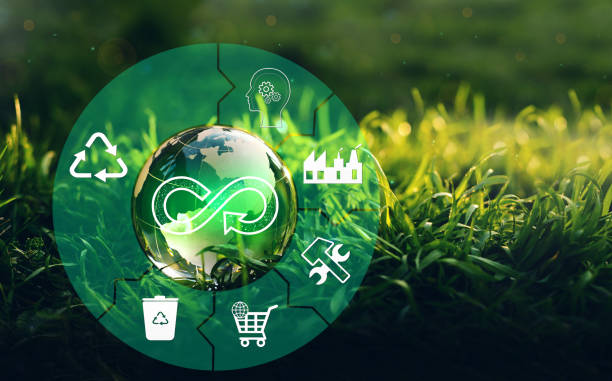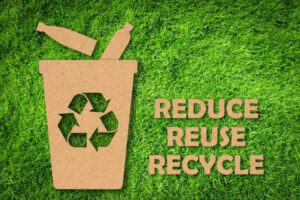What Is Zero Waste?
Zero Waste is a philosophy focused on preventing waste by redesigning the lifecycle of resources. This way, we avoid sending trash to landfills, incinerators, or the ocean. Today, only about 9% of all plastic is recycled. This is a huge problem. Zero waste means reducing, reusing, and recycling our waste.
Reduce
Reduce zero waste is an approach to sustainable development in which resources are used wisely. The focus is on minimising needless and wasteful consumption, including the use of organic materials and energy. Resources are also recycled, reprocessed or returned to the soil to minimize environmental impact. Rather than producing waste, the goal is to create products that can be used again.
In Boulder County, Colorado, for example, residents can use a Zero Waste plan to cut their waste by more than 60%. This plan will help Boulder County residents to make smarter purchasing decisions and save money. The county has committed to becoming a model for waste diversion and is committed to ensuring the sustainability of its economy and communities. By reducing waste and pollution, the county has already cut the cost of its garbage collection by 25 percent. This is a significant reduction, and a Zero Waste plan can help citizens and businesses alike reap the benefits.
One of the first steps in reducing waste is to stop buying new items. Although packaging is meant to last for only a short time, it can take a lifetime to decompose. Purchasing secondhand goods and reducing the amount of stuff you have is an important part of reducing waste.
The next step in reducing waste is to reduce the use of single-use items. By purchasing used goods, you can save about 20 percent-80% of their original cost. You can also sell used items for a profit using consignment stores. These consignment stores often charge a fee for their services, which varies depending on the cost of the items. Reusing items is also a good way to eliminate waste in your life.
Reuse
The zero waste movement aims to reduce the amount of waste produced by using products in a sustainable way. It focuses on replacing single-use items with durable ones that can be reused or recycled. This approach aims to reduce pollution and save money by reducing raw material costs.
Zero waste advocates focus on reducing the amount of waste people produce and making sure that what they do have is used as often as possible. Using less material reduces the need to dispose of materials, which frees up landfill space. Reusing is an important part of zero waste and can be applied to any product, process or situation. This principle can be used in everything from a consumer’s smartphone to the extracting of raw materials from the earth. It is also applied to manufacturing processes, where waste is recycled instead of discarded.
The use of reuse is increasingly becoming an integral part of zero waste initiatives. The United States Department of Sanitation estimates that as much as 10% of the waste that is generated by households could be reused. The Department of Sanitation has long supported donation and reuse initiatives, but until recently they were seen as tangential. However, since the 2015 establishment of the zero waste to landfill goal, the department has refocused its efforts to become more active in this field.
The first level of zero waste involves changing the way we design products. Redesigning products will prevent the need to create waste at the end of their lives. In addition, you can prevent waste by refusing to buy products that are poorly designed or unnecessary. Instead, try to buy products that are designed for reuse or recycling.
Compost
Zero waste is a concept that encourages citizens to recycle everything possible and to compost food and yard waste. By doing so, individuals become more resourceful, present, and conscious. Many zero waste residents also participate in the sharing economy and are active customers at local retailers. The benefits of composting are abundant and many communities are already experiencing them.
Composting is a process where organic materials are broken down to release valuable nutrients. A proper ratio of nitrogen and carbon is necessary to keep your pile alive. In a traditional compost pile, the ratio should be at least 4:1. This means that you should place more browns than greens, but not more than 50:50. Composting also requires constant monitoring and adjustments so that the pile will not be unbalanced.
Composting is the process of breaking down organic matter into rich soil. Compost is a rich source of nitrogen and other nutrients. It also improves the soil’s quality. It is known as black gold by farmers, and it is an essential component of the circular economy. Composting is a more costly endeavor than keeping trash in landfills, but the benefits are many.
Composting is a component of a zero waste policy. It is a process in which organic materials break down aerobically in the presence of oxygen, creating compost. Compost is a valuable soil amendment that supports the growth of plants and improves water retention and aeration. In addition, it contains beneficial bacteria that contribute to the soil’s microbiome.
Composting is a component of zero waste, and it is one of the easiest ways to reduce waste. While composting is not as effective as other methods, it is an important component in zero waste.
Recycle
The concept of Recycle for Zero Waste encourages the reuse and recycling of materials. By eliminating the need to dispose of items, we can save money and prevent pollution. However, only 9% of plastic is recycled. By minimizing the use of plastic, we can reduce the amount of trash going to landfills.
Composting is one of the most effective recycling methods. It turns waste into nutrient-rich compost. The process uses natural processes and maintains the resources for future human use. A close loop is created. It is the best way to ensure the longevity of natural resources. In addition, it can also help you become more aware of the way you treat the environment.
Zero Waste is a visionary goal that focuses on the full life cycle of products. This goal aims to eliminate the need for landfills and incinerators and to conserve resources. It encourages individuals and companies to design products with a long lifespan. In addition to reducing landfill pollution, zero waste reduces greenhouse gas emissions.
Zero waste is the ideal solution for a sustainable world. Zero waste eliminates waste by focusing on the end-of-product lifecycle, recycling, compostability, and reuse. By focusing on these factors, we can save resources, water, and energy. We can create a circular economy where the entire lifecycle of a product is considered.
But what happens when a city aims to become zero waste? DSNY is working on several strategies to reduce waste and increase recycling. One of these strategies is to convert the city’s recycling system to single-stream by 2020. This is a bold step, but it has its drawbacks. The city is pursuing this strategy with the goal of reducing its carbon footprint. While single-stream recycling would boost capture rates, it would not make financial sense based on current market conditions.
Simple solutions
If you’re trying to go zero waste, there are a few simple solutions you can take to reduce your waste. One of these is to refuse unwanted items that enter your home, such as plastic straws or junk mail. When you refuse items, you’re reducing your overall waste, and less waste is disposed of, so you’ll end up with less garbage in the long run. Another simple solution is to reuse products whenever possible. This means swapping disposable products with reusable items such as cloth or paper.
Another simple solution for reducing your waste is to reduce the amount of single-use plastics you use. These include plastic bags, straws, and containers. You should also aim to reduce your consumption, which is a part of Zero Waste. Once you’ve reduced your consumption, you can move on to reusing and repurposing, which is the second step to a more streamlined waste system. For example, you can donate your clothes or make them into rags instead of throwing them away.
For eating on the go, reusable containers can be a great solution. These containers can be filled with home-prepared or takeout food, and can then be washed in the dishwasher or re-used the next day. When you’re on the go, you can also use them to carry lunches with you instead of throwing them away.
Zero waste advocates encourage consumers to think of used materials as valuable resources. Instead of throwing them away, they view them as opportunities for new products, economic development, and community well-being. They encourage consumers to reduce waste and to recycle as much as possible, so that their garbage isn’t dumped into the landfill. In addition to reducing waste, zero waste advocates also advocate for ending the subsidized use of virgin materials by tax payers.














